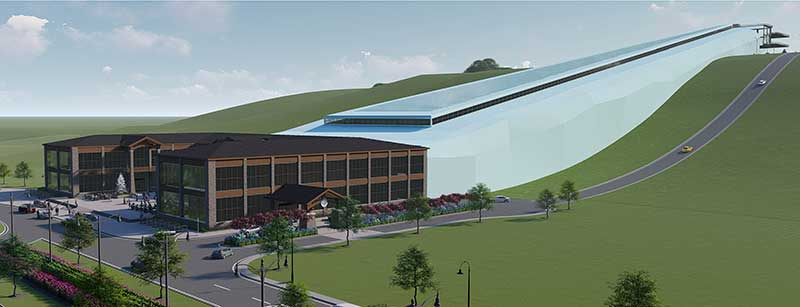
a ski run in Fairfax County was proposed at the I-95 Landfill Complex
Source: Fairfax County, Fairfax Peak: One of the World's Longest Indoor Ski Slopes may be Built on Fairfax County's I-95 Landfill

a ski run in Fairfax County was proposed at the I-95 Landfill Complex
Source: Fairfax County, Fairfax Peak: One of the World's Longest Indoor Ski Slopes may be Built on Fairfax County's I-95 Landfill
Virginia has four ski resorts - Massanutten, Bryce, Omni Homestead, and Wintergreen. Those ski resorts require three things: snow, a hill with topographic relief, and customers. Only the topography is reliable.
Climate change is altering the pattern of snowfall, and creating warmer winter temperatures. Between 2000-2019, warmer temperatures shortened the ski season by 5.5-7.1 days. By 2050, the season could construct by an additional 14-33 days.
When warm temperatures force a delay in opening a resort until after the December holiday season or force a closure in early March, the economics of operating a ski resort in Virginia are dramatically impacted. According to one climate researcher:1
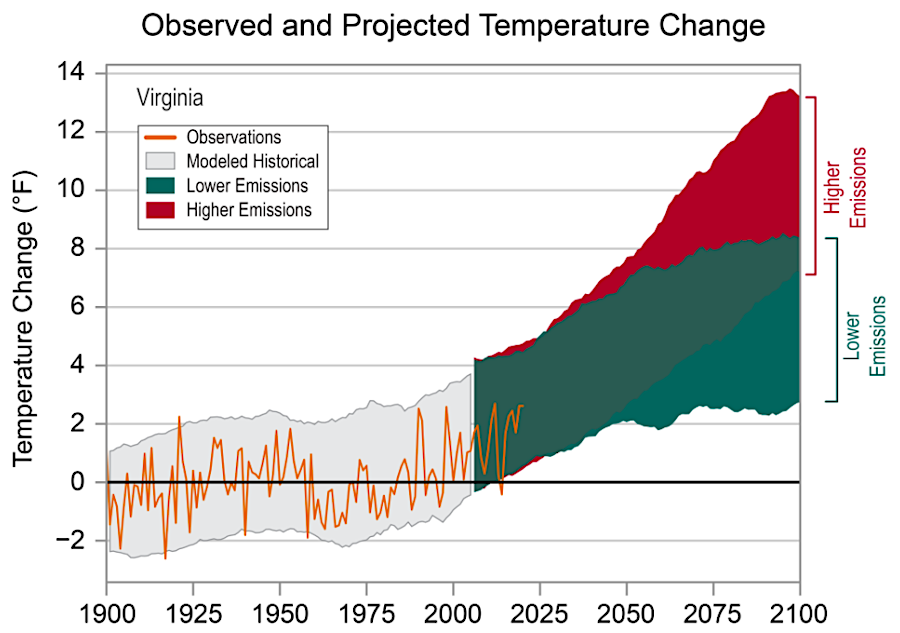
ski resorts face an existential threat as warmer temperatures (compared to the 1901–1960 average) reduce the number of potential skiing days
Source: National Oceanic and Atmospheric Administration (NOAA), State Climate Summaries 2022 - Virginia
Wintergreen Resort tries to open by the second week in December, making real snow for the 26 runs with water from a 5-million gallon tank. At that resort, 400 snow guns can spray 175,000 gallons to make 1 acre-foot of snow and coat trails three feet deep. At Massanutten Resort, 275 snow guns maintain snow on 21 trails.
Traditional snow guns can manufacture snow at a 28℉ wet-bulb temperature by forcing small droplets of water into below-freezing air. If the air is humid, traditional snow guns can not create snow even if temperatures are below freezing such as 29℉.2
A new approach offers the ability to manufacture snow at much higher temperatures. The SnowFactory machine creates a barrel of frozen ice, then shaves flakes from it to blow onto the ski run. A snow cone machines uses a similar approach.
Though significantly more electricity is required, less water is needed. The ice flakes can be created in above-freezing temperatures and the flakes last longer than artificial snow.
The ability to open the season before Christmas may be worth investing $500,000 per machine vs. $15,000-$30,000 per traditional snow gun. In 2023 a ski resort manager said:3
The demand for skiing drops as the population ages and older people choose less-active recreational sports. One business risk for Virginia ski resorts is that customers may choose to visit other ski resorts with better snow conditions, such as Seven Springs/Whitetail Mountain/Ski Liberty in Pennsylvania or Canaan Valley in West Virginia.
West Virginia's Canaan Valley is high enough to capture moisture coming from the west and northwest, even snow originating from Lake Erie. The ski resorts there receive 150 inches of snow per year. Because the valley is a “"textbook cold sink," there are many days when snow guns can be used effectively.
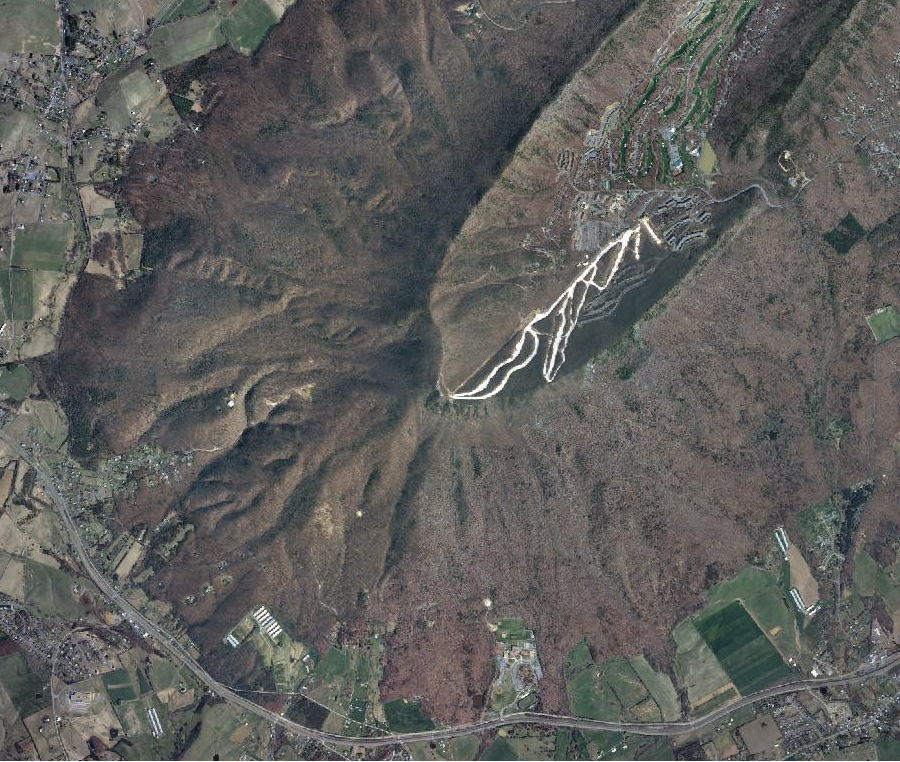
artificial snow outlines the ski slopes at Massanutten Mountain
Source: Virginia Geographic Information Network (VGIN), VBMP 2011 WGS Web Mercator (VGIN)
The most unusual ski resort in Virginia is at Lynchburg. In 2009, Liberty University spent $8 million to cover Candler Mountain with Snowflex. It is a form of artificial turf, with a built-in shockpad, that creates a synthetic snow surface. For skiers that fall down, Snowflex claims to provide a softer impact than hard-packed snow.
The Snowflex Centre is a gleaming white hillside offering artificial skiing 12 months of the year, and was designed to provide recreational diversions at a school that bans the use of alcohol. Public use helps fund operations at the site, one of just two artificial skiing/tubing mountains in the United States.4
There are no snow-covered mountains in Fairfax County, but there are people with money who want to ski. The solution: build an indoor skiing arena with its own snow-covered mountain. The Fairfax County Sports Tourism Task Force announced plans in 2019 to partner with a private corporation, SnowWorld USA, to create a public-private partnership and build the indoor "Fairfax Peak" ski slope on the slopes of the county landfill in Lorton.
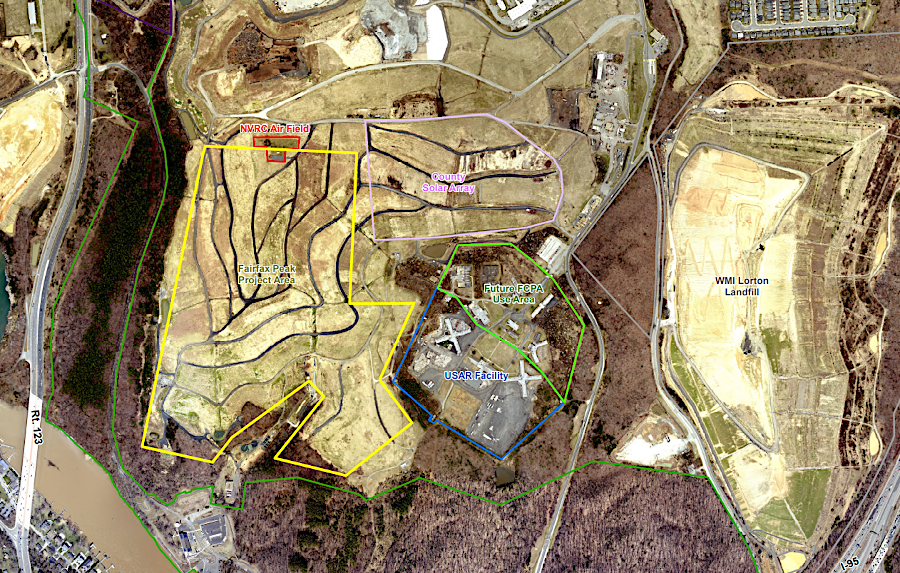
Fairfax Peak is planned for the western edge of the I-95 Lorton Landfill owned by Fairfax County, adjacent to the Urban Search and Rescue (USAR) training site
Source: Fairfax County, Map of Fairfax Peak
The proposal is designed to use the hill created by the pile of municipal solid waste at the I-95 Lorton Landfill, owned by Fairfax County. The site is adjacent to the Lorton Debris Landfill, a construction and demolition debris (CDD) landfill developed by EnviroSolutions before that company was acquired by Waste Management in 2018. The taller construction and demolition debris landfill is planned to become Overlook Ridge Park, a passive recreation site.
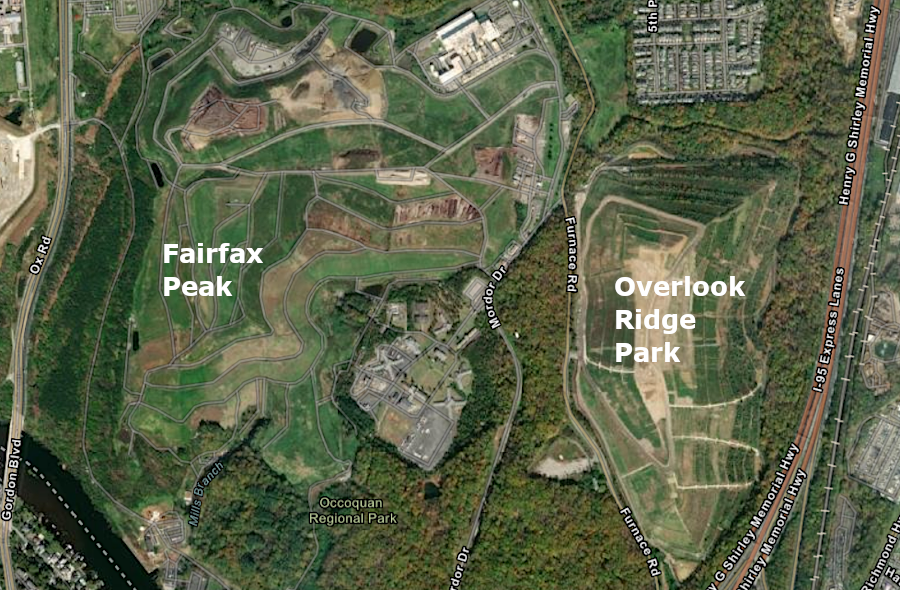
Fairfax Peak was planned west of the taller landfill on which Overlook Ridge Park was planned
Source: ESRI, ArcGIS Online
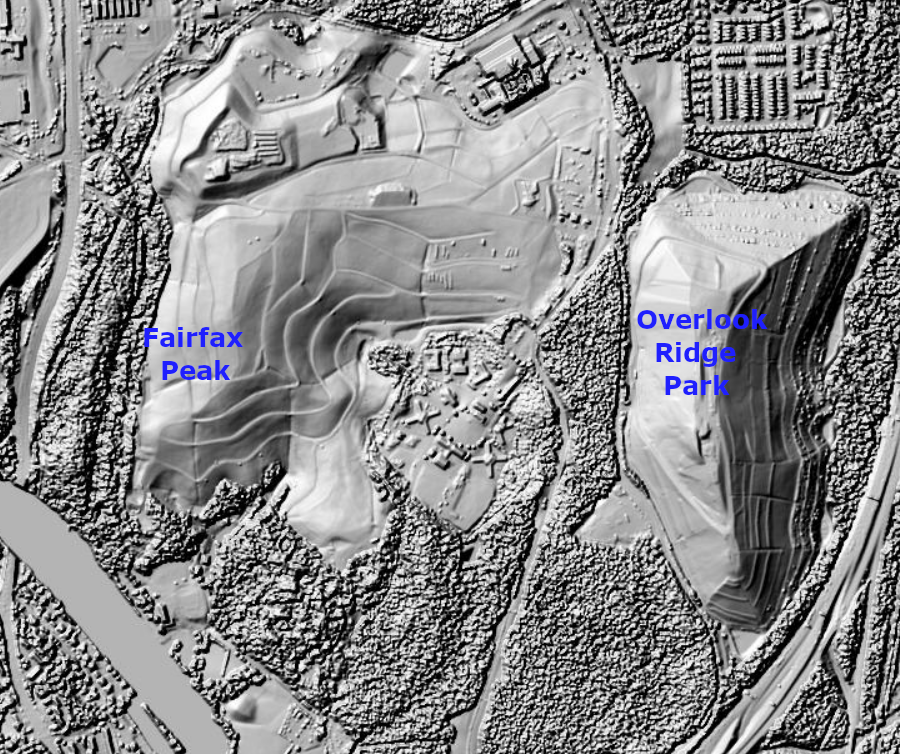
LIDAR reveals the topography of Fairfax Peak and Overlook Ridge Park in Fairfax County
Source: Fairfax County, LiDAR Digital Surface Model -2018
The Fairfax Peak project would have a height of 280 feet, with a 20-degree angle slope. It would resemble the SnowWorld facility at Landgraaf in the Netherlands, and include a hotel, mountain coaster, restaurants and other amenities. The first "indoor, real-snow, year-round ski and snow resort in North America was Big Snow, which opened in 2019 near the Meadowlands in New Jersey (Exit 16 or Exit 18 from the New Jersey Turnpike).5
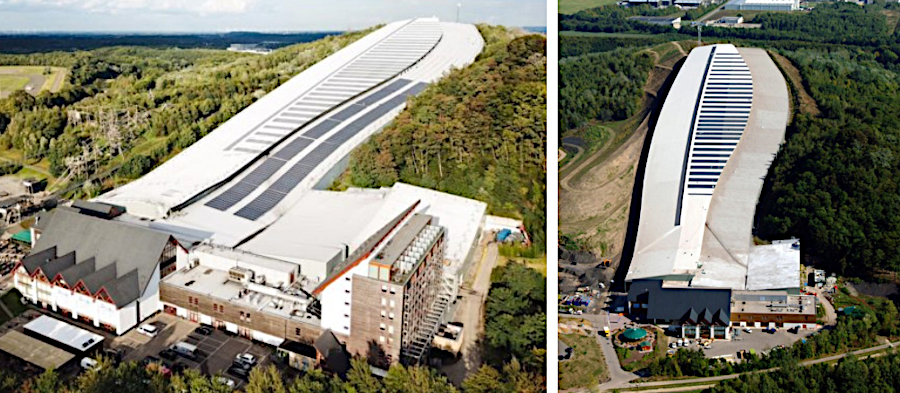
the success of the SnowWorld facility at Landgraaf led to a proposal to build a similar indoor ski ramp and entertainment complex in Fairfax County
Source: Alpine-X LLC, PPEA Proposal - Fairfax Peak, Sports Entertainment and Active Lifestyle Community (p.38)
The justification for the county's involvement was expressed clearly by an elected supervisor:6
The developers suggested that prices for using the longest indoor ski slope in the United States (1,700-foot in length) would be less expensive than traditional ski resorts:7
The COVID-19 pandemic delayed action. In 2021, Fairfax County officials began to annually extend deadlines for SnowWorld and its American partner, Alpine-X, to submit the Fairfax Peak zoning package. By the end of 2024, Alpine-X was searching for new investment partners and SnowWorld was no longer involved. The company let its exclusive rights to the project expire, but the developer was clear that he intended to pursue the project. He said his efforts would end:8
The closest ski resort ever built for Northern Virginia customers was Ski Cherokee, on High Knob Mountain at Linden in Warren County. It was designed to be a family ski area to attract day-trippers from the DC area. Snow was manufactured, since the highest elevation was only 2,200 feet. Three lifts carried customers up the mountain starting in 1989, with a combined capacity of 4,000 people per hour.
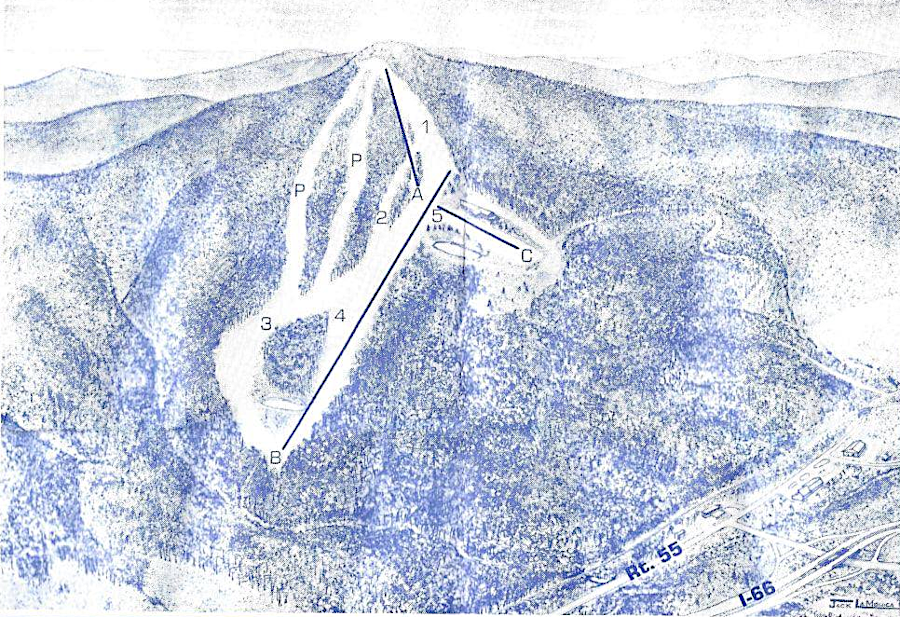
Ski Cherokee lasted only three years
Source: DC Ski, Ski Cherokee
A real estate developer invested $1 million in the facility, but a year later Whitetail Resort opened in Pennsylvania just 30 minutes further away. The developers there invested $40 million to offer superior facilities.
Ski Cherokee lasted only three years. A major shortcoming was the inability to generate and maintain enough snow. The site had previously been an apple orchard, because it was below the cold zone at the top of the mountain and above where cold air was trapped at the bottom.
Though the use of chemicals allowed snowmaking at around 34 degrees, Ski Cherokee experienced three warm, rainy winters before closing. Icy conditions and fog on the slopes during the weekends limited the number of customers. Dry summers limited runoff to be collected in the resort's snowmaking ponds, and objections from neighbors delayed drilling wells needed to pump groundwater and fill those ponds.
The terrain was good for low-intensity skiing, but not for thrill seekers. The more-challenging ski runs at Whitetail Resort in Pennsylvania offered a wider range of experiences. By one assessment, Ski Cherokee failed because of High Knob's topography:9
One possibility for offering opportunities to ski despite Virginia's lack of snow is "dry skiing." As already demonstrated at Liberty University's Liberty Mountain Snowflex Centre, artificial turf can substitute for real snow. The Neveplast synthetic surface uses concentric conical stems to provide the necessary gripping surface.
Existing ski resorts in Europe are adding dry slopes, ensuring skiers will have a place for fun whether or not snow has fallen on the weekend that skiers have scheduled for an annual trip. Ski resorts can expand into four-season resorts, and climate change can become less significant. By 2024, there were 1,000 dry slopes within 50 countries.
Ski instructors consider training on dry slopes to enhance skills; snow is more forgiving for skiers to make mistakes:10
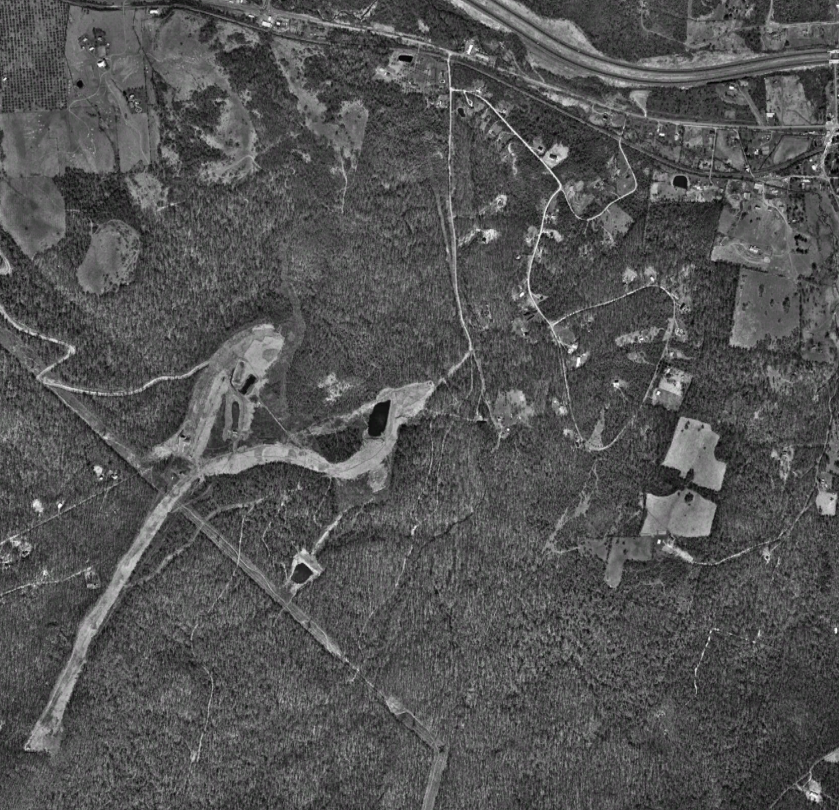
evidence of ponds for manufacturing snow at Ski Cherokee were visible in 1997
Source: GoogleEarth
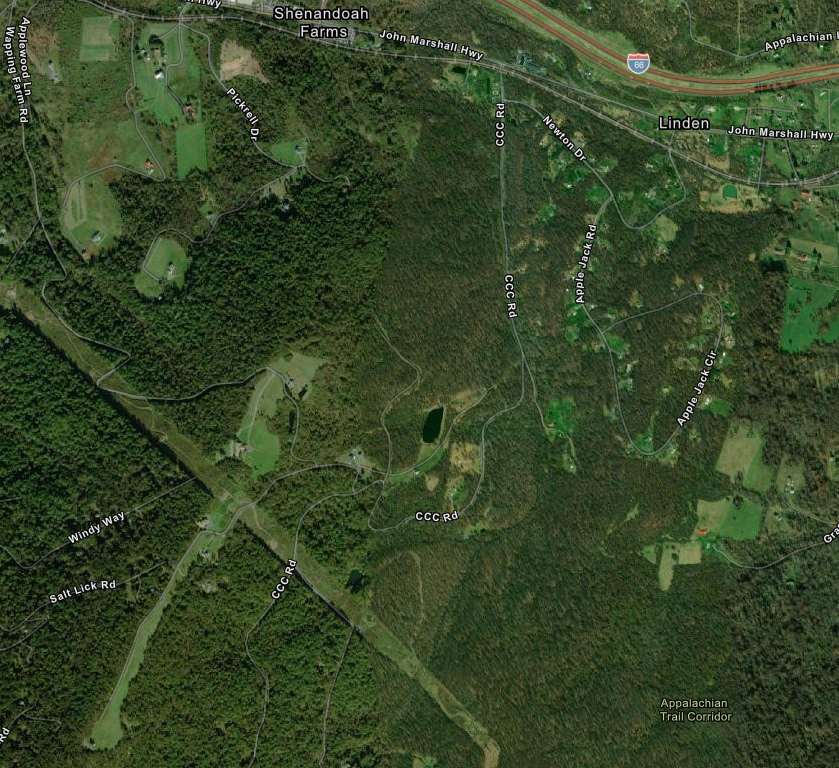
a run cleared for Ski Cherokee is still visible today, west of the CCC Road
Source: ESRI, ArcGIS Online
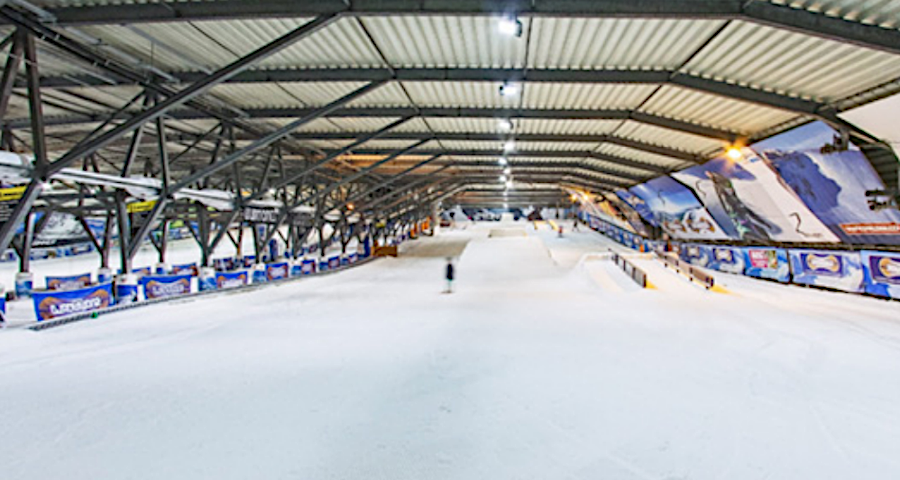
Fairfax Peak was intended to include an entertainment complex, centered on an indoor ski slope
Source: Alpine-X LLC, PPEA Proposal - Fairfax Peak, Sports Entertainment and Active Lifestyle Community (p.41)
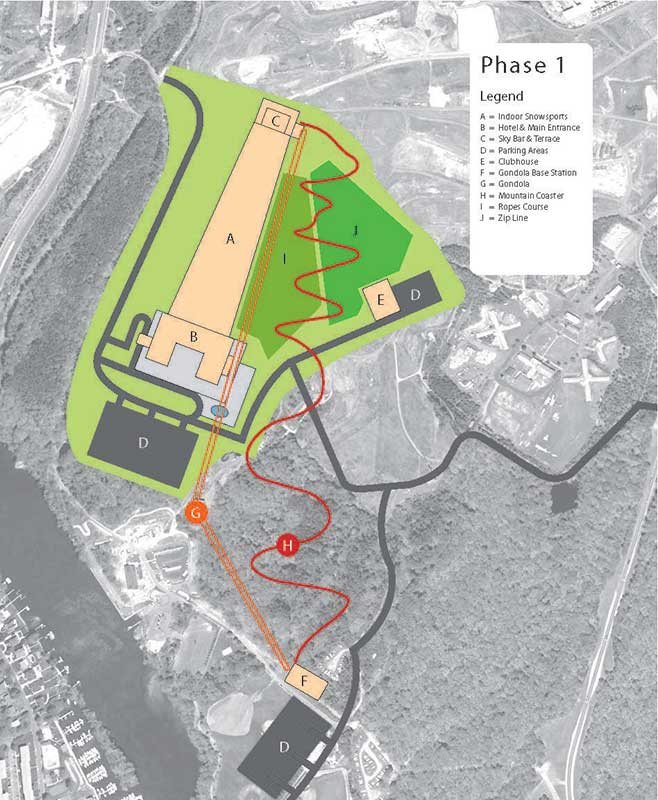
proposed ski run in Fairfax County at the I-95 Landfill Complex
Source: Fairfax County, Fairfax Peak: One of the World's Longest Indoor Ski Slopes may be Built on Fairfax County's I-95 Landfill